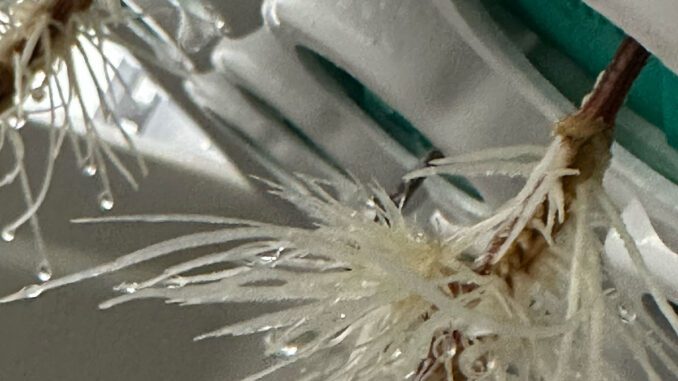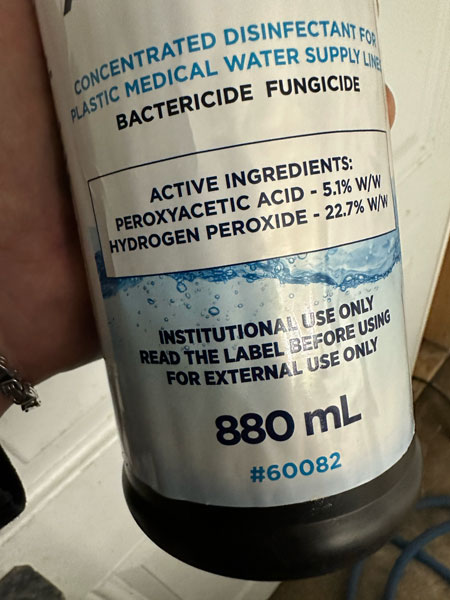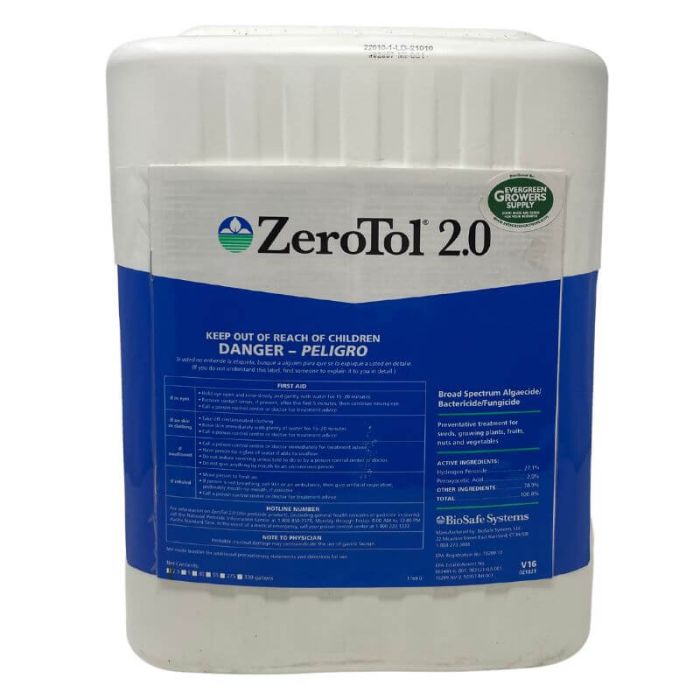
Using Peroxyacetic Acid in Hydroponics Applications
Hydroponics peroxyacetic acid applications include use as a surface disinfectant for systems and irrigation lines Other hydroponic peroxyacetic applications also include diluted applications directly on plants or in active hydroponics systems as a fungicide (ie powdery mildew). Once diluted, it is relatively safe to people, plants, pets and the environment when used as directed and with appropriate PPE (personal protection equipment). Over several hours after application, if left to dry, the diluted ingredients simply turn into water and carbon dioxide. It can be very effective, arguably more so than hydrogen peroxide or chlorine alone, in a variety of horticultural applications.
What is Peroxyacetic Acid?
Also known as paracetic acid or PAA, this highly oxidative liquid compound is basically vinegar and hydrogen peroxide with stabilizers. The smell is strongly of vinegar and in concentrated forms and can be a very powerful oxidizer, ie harmful on contact.
However, once diluted to the correct dosage for a particular application it does a good job of penetrating and oxidizing unwanted biofilms, fungi, bacteria, spores, algae, etc that may occur on plant growing surfaces or even directly on the plants themselves.
Is Hydroponics Peroxyacetic Acid Safe?
If concentrated PAA comes into contact with skin, plants, eyes, etc the effects could be very damaging; much like working with horticultural grade 29% H2O2. The fumes from concentrated PAA can act as an irritant to nose, throat, eyes and lungs. An exact level of safety has not been determined, however.
In real terms, when used as directed by the manufacturer or supplier with gloves and eye wear with covered skin in a well ventilated area hydroponics peroxyacetic acid applications are safe.
Cleanser VS BioFungicide in Hydroponics Applications
Common concentrates of peroxyacetic acid solutions used for cleaning growing surfaces, hydroponics systems, etc are typically 5 % PAA (peroxyacetic acid) and 23 % H2O2 (hydrogen peroxide). The percentages may vary by a percentage point or two depending on the manufacturer or supplier. Recommended dilution rates average from 1:100 to 1:400 when mixed with water.
PAA solutions can be sprayed, circulated or used as immersion. After 12 to 24 hours, the solution can be drained away—when used as a spray and allowed to dry it may not be necessary to rinse for external applications. When soaking systems, tables, etc where plant roots may contact surfaces a good rinse with fresh clean water is often recommended. Consult your hydroponics equipment manufacturer or peroxyacetic acid supplier for detailed instructions on best use and application.
PAA solutions do a GREAT job of penetrating and dissolving stubborn biofilms, algae, salt build up, organic debris that occur on growing surfaces over time. It definitely saves a lot elbow grease and is considerably more effective than using bleach or hydrogen peroxide solutions alone to clean hydroponics systems and surfaces.
Hydroponic peroxyacetic acid applications as a bio-fungicide, for example as a diluted spray to combat powdery mildew, are excellent for suppression and prevention of foliar diseases. Products rated for this application are often suitable for use right up until harvest and will not damage sensitive plant organs when used at appropriate dilution rates. NOTE, for more sensitive crops or crop stages, a higher dilution rate with more frequent applications are recommended. Always follow labels or directions carefully.
Hydroponics peroxyacetic products intended for use in contact with live plant material tend to have a lower Peroxyacetic Acid content and a higher Hydrogen Peroxide content versus PAA products intended as surface cleansers, for example 2% PAA (peroxyacetic acid ) and 27% H2O2 (hydrogen peroxide). Dilution rates may range from 0.5 to 1.25 fluid ounces per gallon of fresh water. Always follow the manufacturer’s recommendations carefully and test on a few plants before spraying entire crops.
Another excellent hydroponics peroxyacetic acid related use is during propagation of seedlings or cuttings to prevent or remedy common diseases like damping off and to remove unwanted microbes that may originate from parent material (cuttings) or on seeds originating from contaminated plants. It’s also great for soaking re-usable cloning collars from aeroponics cloning systems for a high level of disinfection or cleansing.


